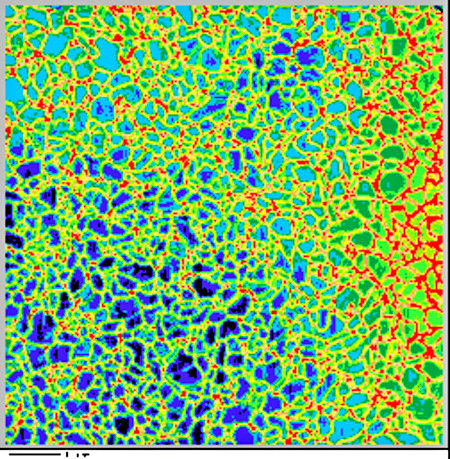1.2.5. Research at the Christian-Albrechts-Univesität zu Kiel
 |
| ELYMAT pictures of multi-crystalline Si for solar cells |
1.2.5. Research at the Christian-Albrechts-Univesität zu Kiel | ||||
| ELYMAT | ||||
| We have encountered the ELYMAT (=short for ELectrolYtical MetAl Tracing) before; it was a product of my Siemens years. In Kiel, J. Carstensen vastly enlarged on the theory, enabling new modes, and W. Lippik adopted the machinery to square-shaped multi-crystalline Si wafers as used for solar cells. We also cooperated with Bernd Eichinger and his company GeMeTec that marketed a commercial version of the Elymat. The Elymat was top in characterizing starting materials, i.e. “raw” silicon and with its help wafers of all kinds became more or less perfect. Very satisfying but with the catch that the Elymet eventually outlived its usefulness. |
| |||
| CELLO | ||||
| CCello stands for “solar CELl LOcal characterization”. It is a rather sophisticated piece of equipment that allows to measure about any sole cell parameter quantitatively and display it in a map- Bulk lifetime,. Surface recombination velocity, sere resistance – you name it. CELLO was commercialized and some systems were sold. With the decline of the German solar cell industry, CELLO became somewhat obsolete. |
| |||
| Electrochemistry of Semiconductors | ||||
This covers a lot of work like ;
All this stuff is well documented in hundreds of publications. |
| |||
© H. Föll (Archive H. Föll)